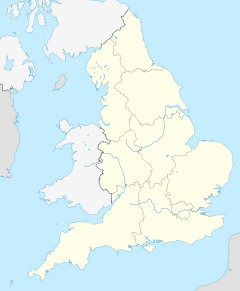Wylam
| Wylam | ||
|---|---|---|
| Coordinates | 54 ° 59 ′ N , 1 ° 49 ′ W | |
|
|
||
| Residents | 2100 | |
| administration | ||
| Post town | WYLAM | |
| ZIP code section | 41 | |
| Part of the country | England | |
| District | Northumberland | |
| Civil Parish | Wylam | |
| Website: Wylam | ||
Wylam [ 'wɪlm ] is a village in north east England . It is located around 16 km west of Newcastle upon Tyne in Northumberland . The population is around 2,100 (as of the end of 2011).
history
Once an industrial village with coal mines and iron works, Wylam is now a commuter suburb of Newcastle upon Tyne and Hexham . The village is served by the Newcastle and Carlisle Railway . The village church was built in 1886 and is dedicated to Oswine , a Northumberland saint.
Persons connected to Wylam
The village is known as the birthplace and place of work of several railway pioneers . The house of George Stephenson, who was born in Wylam, is about a kilometer east of the village on the north bank of the Tyne . It is now owned by the National Trust and can be viewed. Locomotive engineer Timothy Hackworth , who worked with Stephenson, was also born in Wylam . William Hedley , who was born in the neighboring village of Newburn , went to school in Wylam and in 1813 built the " Puffing Billy ", the oldest surviving steam locomotive in the world.

